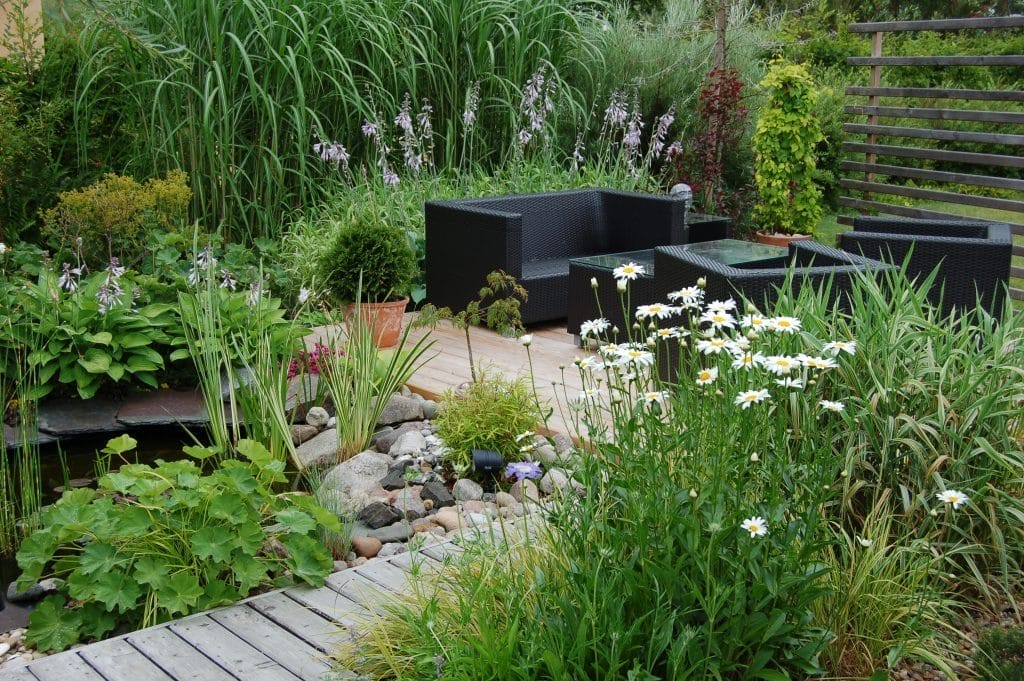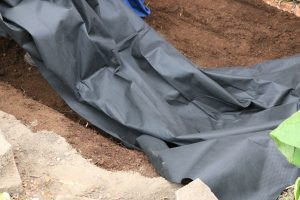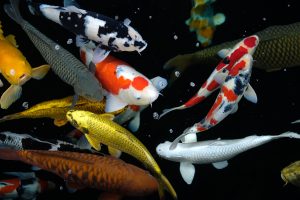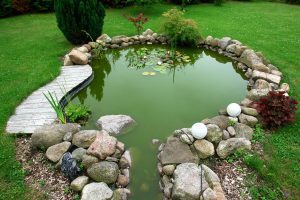
What's the Best Shape for a Garden Pond? Exploring Design Options for Your Outdoor Space
Choosing the right shape for a garden pond can enhance the beauty and functionality of any outdoor space.
The best shape depends on the desired aesthetic, climate, and whether the pond will support fish or just aquatic plants.
Formal gardens often favour geometric shapes like squares and circles, while naturalistic designs may benefit from more organic forms, such as kidney shapes.

Before committing to a shape, consider the location and purpose of the pond.
Proper positioning is crucial for both aesthetic appeal and practicality, influencing water quality and maintenance.
By taking the time to assess these factors, individuals can ensure their garden pond blends harmoniously with their overall garden design.
Key Takeaways
- The shape of the pond impacts both its beauty and purpose.
- Location is key to ensuring the pond functions well and stays healthy.
- Different shapes support various types of aquatic life and plant growth.
Assessing the Ideal Pond Shape

Choosing the right shape for a garden pond involves careful consideration of various factors.
This includes the garden’s size and layout, the desired visual appeal, and the needs of local wildlife and plant life.
Influence of Garden Size and Layout
The size and layout of the garden play a critical role in determining the pond’s shape.
A larger garden can accommodate more complex shapes such as kidney or crescent designs. These shapes help create a more natural look, blending seamlessly with the landscape.
In contrast, smaller gardens often call for simple geometric shapes like circles or rectangles.
These designs maximise space while keeping maintenance manageable.
The placement is also important; ponds should be positioned to avoid excessive shade from trees or buildings. This ensures sufficient sunlight for aquatic plants.
Aesthetic Appeal and Design Principles
A pond should complement the existing garden design.
Formal gardens often benefit from symmetrical shapes, such as circles or squares, which convey a sense of order. They can be surrounded by structured plants for added elegance.
Naturalistic gardens, on the other hand, favour curved, irregular shapes that mimic nature.
Such designs promote a casual, relaxed atmosphere.
Consideration of materials for the pond edges also enhances aesthetics.
Natural stones can help integrate the pond into the landscape, while smooth stones can support a modern feel.
Optimising for Wildlife and Plant Growth
When assessing pond shapes, wildlife and plant growth are key factors.
For instance, a deeper section is essential for fish and aquatic plants, especially in cooler areas.
A shape that allows for varying depths encourages biodiversity.
Wildlife ponds should have gentle, sloping banks to provide easy access for animals.
Irregular shapes often offer more edges, creating varied habitats.
Additionally, a diverse selection of plants can thrive in different depths, attracting a variety of wildlife.
Ensuring that the pond’s shape and depth cater to both plants and animals results in a thriving ecosystem.
Choosing a Location for Your Pond
Selecting the right spot for a garden pond is crucial for its health and aesthetics.
Factors like sunlight, tree proximity, and elevation can significantly affect the pond’s ecosystem and maintenance needs.
Sunlight and Shade Considerations
The amount of sunlight a pond receives is vital for its balance.
Most pond plants thrive with six hours of sunlight each day. However, too much sun can lead to excessive algae growth.
Morning sunlight is ideal, as it helps warm the water and encourages plant growth without overdoing it.
A location that receives afternoon shade will help keep the water cooler, benefiting fish and other wildlife.
This balance is especially important for wildlife ponds, which require stable temperatures to support aquatic life.
When selecting a site, observe how sunlight moves across the area throughout the day to find the best location.
Proximity to Trees and Root Systems
Positioning a pond near trees can have both benefits and drawbacks.
While trees provide shade and habitat for wildlife, their root systems can extend far from the trunk.
Roots may disrupt the pond’s foundation or draw water away from it. Leaf litter from trees can also contribute to debris in the pond, leading to maintenance issues and water quality concerns.
For sunken ponds, it is best to stay at least ten feet away from large trees to avoid these problems.
Opt for ornamentals or smaller trees that won’t overwhelm the pond area.
Elevation and Drainage Factors
The elevation of the chosen site plays a key role in how well water drains from the pond.
A level area is ideal, as it prevents excess water from pooling, which can cause issues for both plants and fish.
It is essential to consider the surrounding landscape as well.
Areas that naturally slope away from the pond will help with drainage.
If the pond is placed higher than the surrounding ground, it may also create easier access and a scenic view.
For raised ponds, ensure proper installation to prevent overflow during heavy rains.
Understanding the drainage characteristics of the location is vital for maintaining a healthy garden pond.
Types of Garden Ponds

Garden ponds come in various types, each serving different purposes and catering to specific needs. Understanding these distinctions helps in creating an outdoor space that aligns with both functionality and aesthetics.
Wildlife-Friendly Ponds
A wildlife-friendly pond is designed to attract and support local wildlife. This type of pond usually features shallow edges and varied depths to accommodate different animal species.
Plants such as native water lilies and reeds provide habitat and food for insects, frogs, and birds. The inclusion of rocks and log piles can offer essential shelter.
These ponds often have no fish, allowing amphibians to thrive.
They can enhance the local ecosystem and support biodiversity. Regular maintenance is crucial to prevent the growth of unwanted algae and invasive plants.
Ornamental Fish Ponds
Ornamental fish ponds, often referred to as koi ponds, are particularly popular among garden enthusiasts. These ponds are specifically designed to house fish, typically koi or goldfish.
They require deeper sections of at least 2-3 feet to ensure the fish’s survival during colder months.
A combination of both shallow and deep areas supports the plants while giving fish space to swim freely.
To maintain water quality, a filtration system is essential.
Additionally, the pond’s shape should minimise sharp edges and corners, promoting healthy water circulation.
Aquatic plants like lily pads can offer shade and breeding areas for fish.
Minimalist Water Features
Minimalist water features focus on simplicity and elegance.
These ponds generally emphasise clean lines and a sleek design, often using geometric shapes like rectangles or circles.
They may include fewer plants and fish, making maintenance easier.
The aim is to create a calm, serene area that enhances the garden’s aesthetic without overwhelming it.
Waterfalls or small fountains can add visual interest while providing soothing sounds.
Minimalist designs are perfect for small spaces, allowing for relaxation and contemplation while maintaining a modern garden look.
Selecting Pond Liners and Underlays
Choosing the right pond liners and underlays is crucial for achieving a stable and lasting garden pond.
The right materials will prevent leaks and protect the pond’s structure from damage. Understanding the various options available helps in making an informed decision.
Material Choices for Durability
When selecting a pond liner, durability is key. Various materials are available, each with distinct characteristics:
PVC Liners: Lightweight and flexible, PVC liners are easy to work with. They are generally more affordable but can be less durable long-term.
EPDM Liners: Known for their strength and lifespan, EPDM liners can last over 50 years. They withstand extreme temperatures and UV exposure, making them an excellent choice for diverse climates.
Butyl Liners: These offer superior flexibility but come at a higher cost. They are also resistant to punctures and tearing, ensuring they remain intact over time.
Pond underlay is essential as it protects the liner from sharp rocks and roots.
High-quality underlay made from geotextile fabric is recommended to enhance durability.
Ensuring Proper Installation
Proper installation of pond liners and underlays is critical for preventing leaks and extending the pond’s life. Here are important steps to consider:
Prepare the Site: The pond’s shape should be carefully dug with smooth edges. Remove any sharp objects to prevent liner damage.
Choose the Right Size: Measure the pond’s length, width, and depth to determine the ideal liner size. Ensure that the liner extends beyond the pond’s edges for secure anchoring.
Install the Underlay: Lay down the pond underlay before the liner. It should cover the entire bottom and sides to create a protective layer.
Apply the Liner: Carefully position the pond liner, smoothing out wrinkles. It is crucial to avoid trapping air beneath the liner.
Secure the Edges: Use stones or soil to weigh down the edges, ensuring the liner stays in place. Proper anchoring prevents movement during filling.
Incorporating Plants in Pond Design

Plants play a vital role in pond ecosystems. They enhance beauty, provide habitat, and support wildlife.
Selecting the right plants can lead to a balanced pond that thrives with life.
Aquatic Plants for a Healthy Ecosystem
Aquatic plants are essential for maintaining a healthy pond. They offer shelter and food for fish and other wildlife.
Suitable plants include water lilies, lotus, and floating plants like water hyacinth.
These plants help regulate water temperature and provide shade, preventing excessive algae growth.
Additionally, some aquatic plants, such as flowering rush and water forget-me-not, produce lovely blooms, adding visual interest.
Hornwort is another beneficial plant; it grows submerged and helps oxygenate the water while offering habitats for small creatures.
To create a thriving ecosystem, a mix of these plants is recommended.
Choosing Marginal and Oxygenating Species
Marginal plants grow at the pond’s edge and are crucial for stability and aesthetics. They absorb excess nutrients, preventing algae blooms.
Suitable options include cattails and sedge.
In contrast, oxygenators like hornwort and Elodea are planted underwater. They play a critical role in producing oxygen and maintaining clear water.
Planting a combination of both marginal and oxygenating species ensures a balanced ecosystem.
When designing, it is advisable to group plants based on their growth requirements, which will lead to a more vibrant and functional pond.
Creating Habitats for Wildlife
Designing a wildlife pond is an excellent way to support local biodiversity. Specific features can attract amphibians, birds, and insects, creating a thriving ecosystem.
Understanding what attracts these creatures is key to establishing a healthy habitat.
Design Features that Attract Amphibians
Amphibians like frogs, toads, and newts thrive in ponds with natural edges. These edges create shallow areas, which are essential for breeding and feeding.
Key Features:
- Shallow Margins: Keeping the water shallow provides safe spots for amphibians to lay eggs.
- Vegetation: Adding water plants, such as reeds and lilies, offers cover and nesting areas.
- Rock Piles: Placing rocks near the pond creates essential hiding spots from predators.
A varied depth profile encourages a wider range of amphibian species, improving the pond’s ecological balance. This design will help attract and sustain the amphibian population over time.
Encouraging Birds and Insects to Visit
Birds and insects play an important role in maintaining a healthy wildlife pond. Specific features can make the area more inviting for these creatures.
Attraction Strategies:
- Plant Native Flora: Native flowering plants provide food and shelter for various insects, attracting birds that feed on them.
- Provide Perches: Installing branches or stones above the water allows birds to safely watch for insects and take a drink.
- Tall Grasses: Letting grass grow tall around the pond provides cover for small birds and encourages insects to settle.
Incorporating these design features creates a rich habitat that supports a variety of wildlife, ultimately benefiting the local ecosystem.
Pond Edging and Borders
Pond edging and borders play a vital role in defining the aesthetics and functionality of a garden pond. Choosing the right style contributes to the overall appeal while also serving practical purposes.
Natural vs Formal Edging Styles
Natural edging styles blend the pond into the surrounding landscape. They often use rocks, gravel, or soft plant life.
This approach creates a relaxed look, making it suitable for informal gardens. For example, a sloping side can be gently covered with moss or native plants, enhancing the natural feel.
Formal edging tends to use materials like paving stones or concrete. This style gives a neater appearance, ideal for structured landscapes.
Edging materials can be arranged in geometric patterns. This creates a clear boundary between the pond and garden soils while ensuring stability.
Users should consider their garden’s overall theme when choosing between these styles.
Using Plant Life for Seamless Transitions
Utilising plants around the pond provides an elegant transition between water and land.
Marginal plants, like water lilies and irises, can be positioned at the pond’s edge. These not only improve the visual appeal but also provide habitats for wildlife.
Incorporating a bog garden near the pond can add diversity.
Plants like cattails and ferns thrive in moist conditions. This contributes to a natural environment while keeping the pond’s edge stable.
The careful selection of plants helps blend pond borders seamlessly into the garden, making the space feel harmonious.
Water Quality and Maintenance
Maintaining water quality in a garden pond is essential for the health of aquatic life. Key practices include using filtration systems and managing algae and debris effectively.
Here’s a closer look at how to achieve and maintain good water quality.
Filtration Systems and Aeration
A proper filtration system is vital for any garden pond. This system removes debris, excess nutrients, and harmful bacteria, ensuring clear water.
There are various types of filters available, including mechanical, biological, and chemical filters. Each serves a different purpose.
Mechanical filters remove larger particles, while biological filters support beneficial bacteria that break down waste.
Lastly, chemical filters can eliminate harmful substances like chlorine, especially if the pond is filled with tap water.
In addition to filtration, aeration improves water quality by increasing oxygen levels.
Aerators or fountains can help prevent stagnant water, promoting a healthier environment for fish and plants.
Regular monitoring of water quality is essential, especially after rain, to ensure that any contaminants are addressed promptly.
Managing Algae and Debris
Algae can quickly become a problem in garden ponds, especially in sunny conditions. It thrives in nutrient-rich water, leading to poor visibility and, in some cases, harming aquatic life.
To manage algae, adding plants is beneficial, as they compete for nutrients and provide shade.
It is important to perform regular clean-up to remove debris like fallen leaves and excess nutrients.
This can be done by using nets or skimmers. Additionally, avoiding the use of chlorine is crucial since it can harm beneficial organisms in the pond.
Regular testing of water quality should include checking pH levels, ideally between 6.5 and 8.5, to maintain a balanced environment for all inhabitants.
Introducing Fish to Your Pond
Introducing fish to a garden pond requires careful planning. Selecting the right species and maintaining a balanced ecosystem are essential for the health of the fish and the pond environment.
Selecting Compatible Fish Species
Choosing the right fish is crucial for a thriving pond. Goldfish are popular choices due to their hardiness and adaptability.
They come in various colours and forms, making them visually appealing.
Koi are another excellent option. They are larger and can live for many years, but they need more space and cleaner water compared to goldfish.
It is advisable to start with a few fish to monitor how they adapt to the pond.
Additionally, consider the climate and temperature. Make sure the selected fish species can thrive in the local weather conditions. Avoid mixing species that may conflict, as some fish can be territorial.
Ensuring a Balanced Pond Ecosystem
A balanced pond ecosystem is vital for the well-being of the fish.
Proper water quality must be maintained, with regular testing for pH, ammonia, and nitrate levels. Healthy water supports fish health and growth.
Adding aquatic plants provides oxygen and shelter for fish, contributing to a balanced habitat.
Plants also help absorb excess nutrients, preventing algae growth.
Furthermore, a filtration system plays a significant role. It helps remove impurities and keeps the water clear.
Regular maintenance of pumps and filters ensures the environment remains healthy for the fish.
Maintaining a Healthy Pond Through the Seasons
Proper care throughout the seasons is essential for keeping a garden pond healthy. Regular attention to water quality and the needs of plants and wildlife ensures a thriving ecosystem.
Seasonal Care and Precautions
During spring, it is important to clear debris and debris from the pond. This includes dead leaves and any unwanted algae that may have built up over winter. Regular cleaning helps improve water quality and promotes healthy plant growth.
As temperatures rise in summer, monitoring water levels becomes crucial.
Evaporation may cause water levels to drop, which can stress aquatic plants. Consider using a pond net to catch fallen leaves from surrounding trees, reducing the need for constant clean-up.
In autumn, pruning back submerged plants is necessary. This prevents debris from sinking and decomposing in the water.
Setting up a pond cover keeps out autumn leaves and debris. Winterisation begins in late autumn; cover pumps and fountains to protect them from freezing.
Adjusting Plant and Animal Care in Winter
During winter, managing shallow water areas is vital.
Fish and other aquatic life may need less food as their metabolic rates slow down. They should be fed only small amounts to prevent water quality issues.
Ensuring that some parts of the pond remain free of ice allows for gas exchange, which is important for fish survival.
Aeration can be achieved using a pond heater or aerator to maintain a small open area.
In addition, it is advisable to remove any dead plant material from the pond.
This helps to prevent toxic build-up as organic matter decays.
Maintaining a clean environment during winter ensures the pond remains healthy and prepares it for the active spring months.



